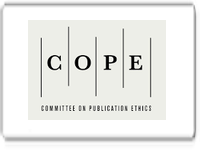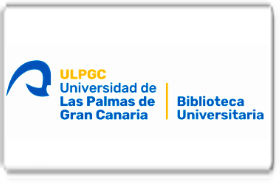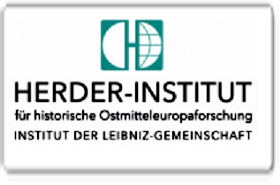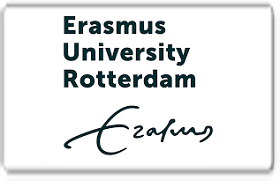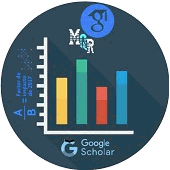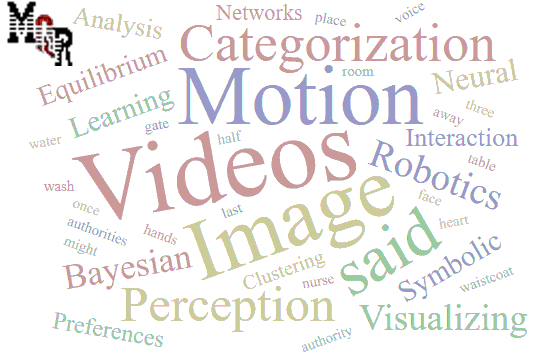Gestión del Social Media marketing y comunicación digital en el Gobierno Autónomo Descentralizado Municipal: un análisis actitudinal y orientación receptiva del ciudadano del cantón Penipe
DOI:
https://doi.org/10.56048/MQR20225.8.3.2024.4158-4185Palabras clave:
Social Media Marketing; Comunicación Digital; Participación Ciudadana; Gobierno Local; Percepción CiudadanaResumen
El estudio investigó la gestión del Social Media Marketing y la comunicación digital implementada por el GAD Municipal de Penipe, con especial atención a la actitud y receptividad de los ciudadanos. Mediante un enfoque cuantitativo, descriptivo y correlacional, se analizaron las respuestas de 364 ciudadanos con un cuestionario estructurado, los resultados reflejan una percepción positiva hacia el uso de las redes sociales por parte del GAD Municipal, destacando un alto nivel de confiabilidad de la herramienta de medición (alfa de Cronbach ≥ 0,966). El análisis factorial exploratorio identificó dos dimensiones principales: “Redes Sociales” y “Orientación Reactiva al Mercado”, que explicaron el 82,52% de la varianza total. La mayoría de los participantes percibieron la comunicación del GAD como clara y útil, aunque surgió una considerable indecisión en un segmento de la población. La fuerte correlación observada entre la gestión del marketing digital y las actitudes de los ciudadanos (valor de 0,865, p<0,000) destacó la importancia de una estrategia digital eficaz. Pese a los avances, el estudio recomienda profundizar en los motivos de la indecisión y preferencia por la atención presencial, así como explorar nuevas herramientas digitales para fortalecer la confianza y la participación ciudadana.
Descargas
Métricas
Cited
DOI: 10.56048![]()
Citas
Abreu, J. L. (2012). Hipótesis, Método & Diseño de Investigación. Daena: International Journal of Good Conscience, 7(2), 187–197.
Adler, C. L., & Zarchin, Y. R. (2002). The “Virtual Focus Group”: Using the Internet to Reach Pregnant Women on Home Bed Rest. Journal of Obstetric, Gynecologic & Neonatal Nursing, 31(4), 418–427. https://doi.org/10.1111/j.1552-6909.2002.tb00064.x
Ajzen, I., & Fishbein, M. (1980). Understanding Attitudes and Predicting Social Behavior. Prentice-Hall.
Benson, V., & Morgan, S. (2015). Implications of Social Media Use in Personal and Professional Settings (V. Benson & S. Morgan, Eds.). IGI Global. https://doi.org/10.4018/978-1-4666-7401-1
Bertot, J. C., Jaeger, P. T., & Grimes, J. M. (2010). Using ICTs to create a culture of transparency: E-government and social media as openness and anti-corruption tools for societies. Government Information Quarterly, 27(3), 264–271. https://doi.org/10.1016/j.giq.2010.03.001
Bonsón, E., Torres, L., Royo, S., & Flores, F. (2012). Local e-government 2.0: Social media and corporate transparency in municipalities. Government Information Quarterly, 29(2), 123–132. https://doi.org/10.1016/j.giq.2011.10.001
Cañarte, Y. (2020). Políticas públicas y participación ciudadana: estrategia de gobernanza. UNESUM-Ciencias, 4(2).
CEPAL, C. E. para A. L. y el C. (2021). Tecnologías digitales para un nuevo futuro.
Chaffey, D., & Ellis-Chadwick, F. (2019). Digital Marketing: Strategy and Implementation (7th ed.). Pearson Education.
Chutimaskul, W., & Chongsuphajaisiddhi, V. (2004). A Framework for Developing Local E-government (pp. 335–340). https://doi.org/10.1007/978-3-540-24683-1_34
Costello, A. B., & Osborne, J. (2005). Best practices in exploratory factor analysis: four recommendations for getting the most from your analysis. Research, and Evaluation Practical Assessment, Research, and Evaluation, 10, 7. https://doi.org/10.7275/jyj1-4868
Du Plessis, C. (2017). The role of content marketing in social media content communities. SA Journal of Information Management, 19(1). https://doi.org/10.4102/sajim.v19i1.866
Etter, M., Ravasi, D., & Colleoni, E. (2019). Social Media and the Formation of Organizational Reputation. Academy of Management Review, 44(1), 28–52. https://doi.org/10.5465/amr.2014.0280
Field, A. (2013). Discovering Statistics Using IBM SPSS Statistics (4a Edición).
Gil-García, J. R., & Pardo, T. A. (2005). E-government success factors: Mapping practical tools to theoretical foundations. Government Information Quarterly, 22(2), 187–216. https://doi.org/10.1016/j.giq.2005.02.001
Gómez-Villegas, M., Suárez-Rico, Y. M., Valenzuela-Jiménez, L. F., & García-Benau, M. A. (2021). La transparencia y la rendición de cuentas en redes sociales. Un caso de conflictos mineros en Latinoamérica. Innovar, 31(82). https://doi.org/10.15446/innovar.v31n82.98416
Granda Tandazo, C. V., Paladines Galarza, F. Y., & Velásquez Benavides, A. V. (2016). La comunicación estratégica digital en las organizaciones públicas de Ecuador Estado actual y proyección. Revista Latina de Comunicación Social, 71, 211–231. https://doi.org/10.4185/RLCS-2016-1092
Hair, J., Black, W., Babin, B., & Anderson, R. (2010). Multivariate Data Analysis (Pearson Education).
Hernández, R., Fernández, C., & Baptista, M. (2010). Metodología de la investigación, 5ta Ed (Quinta). www.FreeLibros.com
Hernández Sampieri, R., Fernández Collado, C., María del Pilar Baptista Lucio, D., Méndez Valencia, S., & Mendoza Torres, C. P. (2014). Metodología de la investigación (Sexta).
INEC. (2022). Tecnologías de la Información y Comunicación-TIC. https://www.ecuadorencifras.gob.ec/tecnologias-de-la-informacion-y-comunicacion-tic/
INEC. (2023). Ecuador creció en 2.5 millones de personas entre 2010 y 2022.
Ingrams, A., Manoharan, A., Schmidthuber, L., & Holzer, M. (2020). Stages and Determinants of E-Government Development: A Twelve-Year Longitudinal Study of Global Cities. International Public Management Journal, 23(6), 731–769. https://doi.org/10.1080/10967494.2018.1467987
Kaplan, A. M., & Haenlein, M. (2010). Users of the world, unite! The challenges and opportunities of SocialMedia. Business Horizons, 53(1), 59–68. https://doi.org/10.1016/j.bushor.2009.09.003
Kietzmann, J. H., Hermkens, K., McCarthy, I. P., & Silvestre, B. S. (2011). Social media? Get serious! Understanding the functional building blocks of social media. Business Horizons, 54(3), 241–251. https://doi.org/10.1016/j.bushor.2011.01.005
Labarca, C., Valenzuela, S., Bachmann, I., & Grassau, D. (2022). Medios de comunicación y confianza política en América Latina: análisis individual y contextual del rol de las noticias en la confianza en el gobierno y el Estado. Revista Internacional de Sociología, 80(4), e216. https://doi.org/10.3989/ris.2022.80.4.M22-01
Lenk, K., & Traunmuller, R. (2000). A framework for electronic government. Proceedings 11th International Workshop on Database and Expert Systems Applications, 271–277. https://doi.org/10.1109/DEXA.2000.875038
Liu, B. (2010). Sentiment analysis and subjectivity. In N. Indurkhya & F. J. Damerau (Eds.), Handbook of natural language processing (pp. 627–666). Chapman and Hall/CRC. https://doi.org/10.1201/9781420085938
Loukis, E. N. (2008). Dunleavy, P., Margetts, H., Bastow, S., & Tinkler, J. (2006). Digital Era Governance—IT Corporations, the State and e-Government . New York: Oxford University Press. 289 pp. $45.00 (hardbound). Social Science Computer Review, 26(2), 254–257. https://doi.org/10.1177/0894439307304515
Maese, J., Alvarado, A., Valles, D., & Báes, Y. (2016). Coeficiente alfa de Cronbach para medir la fiabilidad de un cuestionario difuso. Cultura Científica Y Tecnológica, 13(59), 146–156.
Magro, M. J. (2012). A Review of Social Media Use in E-Government. Administrative Sciences, 2(2), 148–161. https://doi.org/10.3390/admsci2020148
Manoharan, A. P., & Ingrams, A. (2018). Conceptualizing E-Government from Local Government Perspectives. State and Local Government Review, 50(1), 56–66. https://doi.org/10.1177/0160323X18763964
Medina-Molina, C., Rey-Moreno, M., Pérez-González, B., & Rufín, R. (2018). Sesgos cognitivos y uso del e-gobierno. Una perspectiva conductual. Gestión y Análisis de Políticas Públicas, 88–106. https://doi.org/10.24965/gapp.v0i19.10450
Mergel, I. (2013). A framework for interpreting social media interactions in the public sector. Government Information Quarterly, 30(4), 327–334. https://doi.org/10.1016/j.giq.2013.05.015
Myers, L., & Sirois, M. J. (2005). Spearman Correlation Coefficients, Differences between. In Encyclopedia of Statistical Sciences. Wiley. https://doi.org/10.1002/0471667196.ess5050.pub2
OCDE. (2020). Making the Most of Technology for Learning and Training in Latin America. OECD. https://doi.org/10.1787/ce2b1a62-en
OECD. (2024). Revisión del Gobierno Digital en América Latina y el Caribe. OECD. https://doi.org/10.1787/7a127615-es
Olaniyi, O. O., Ugonnia, J. C., Olaniyi, F. G., Arigbabu, A. T., & Adigwe, C. S. (2024). Digital Collaborative Tools, Strategic Communication, and Social Capital: Unveiling the Impact of Digital Transformation on Organizational Dynamics. Asian Journal of Research in Computer Science, 17(5), 140–156. https://doi.org/10.9734/ajrcos/2024/v17i5444
Peppard, J., & Ward, J. (2002). Strategic Planning for Information Systems (3rd Edition). John Wiley & Sons Ltd.
Picazo-Vela, S., Fernandez-Haddad, M., & Luna-Reyes, L. F. (2016). Opening the black box: Developing strategies to use social media in government. Government Information Quarterly, 33(4), 693–704. https://doi.org/10.1016/j.giq.2016.08.004
Reddick, C. G., & Norris, D. F. (2013). e-participation in local governments. Proceedings of the 14th Annual International Conference on Digital Government Research, 198–204. https://doi.org/10.1145/2479724.2479753
Stalker, G., Jimenez, C. E., Van Schalkwyk, F., & Cañares, M. (2015). Open government and open data a global perspective. 2015 Second International Conference on EDemocracy & EGovernment (ICEDEG), 9–13. https://doi.org/10.1109/ICEDEG.2015.7114477
Tabachnick, B. G., & Fidell, L. S. (2013). Using Multivariate Statistics (6a Edición). Pearson.
Publicado
Cómo citar
Número
Sección
Categorías
Licencia

Esta obra está bajo una licencia internacional Creative Commons Atribución 4.0.
Los autores se comprometen a respetar la información académica de otros autores, y a ceder los derechos de autor a la Revista MQRInvestigar, para que el artículo pueda ser editado, publicado y distribuido. El contenido de los artículos científicos y de las publicaciones que aparecen en la revista es responsabilidad exclusiva de sus autores. La distribución de los artículos publicados se realiza bajo una licencia 


















